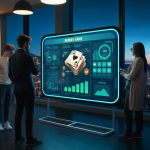Dubai museums are turning to 3D printing to preserve and present their rich heritage. However, ensuring material authenticity in these replicas is a priority.
Material authenticity refers to how closely the printed object matches the original in texture, appearance, and structural composition. For museums in Dubai, this is more than just a technical concern. It’s about cultural responsibility, visitor trust, and honoring historical legacy.
The Importance of Material Authenticity in Dubai’s Cultural Landscape
Dubai is home to a diverse and growing population. Its museums serve not only as tourist attractions but also as cultural institutions that educate residents and visitors about the region’s past. When a museum displays a 3D printed replica, it must reflect the original artifact with precision.
Authentic materials play a major role in delivering this experience. If a replica looks artificial or feels inaccurate, it can affect how people perceive the value of the original heritage item.
Digital Scanning and Texture Mapping
The first step to ensuring authenticity is high-resolution scanning. Dubai museums often use laser scanning or photogrammetry to capture every detail of the original item. These techniques record the physical features, textures, and wear marks of the artifact. The collected data is then used to create 3D models.
Texture mapping plays a key role. It ensures that the surface finish of the replica mirrors the original. Museums collaborate with digital artists to reproduce subtle features like age cracks, tool marks, and faded paint. These visual cues add to the realism of the final print.
Selection of Materials Based on Historical Research
Choosing the right printing material is another critical factor. Museums in Dubai work with historians and conservation experts to understand what the original artifact was made from. Whether it’s bronze, clay, wood, or textile, research helps identify a compatible modern alternative.
Advanced 3D printing Dubai technologies allow the use of diverse materials. These include resins, ceramics, metals, and even sandstone composites. For example, if a museum wants to replicate a 12th-century ceramic bowl, they may use a ceramic-based filament. The goal is to match the texture, weight, and even the sound of the object when tapped.
Collaboration with Archaeologists and Conservators
To ensure accuracy, museums partner with archaeologists, conservators, and heritage consultants. These experts verify that the digital model and the selected material are appropriate for the specific artifact. In Dubai, where many items relate to Islamic history, Bedouin culture, or maritime trade, local knowledge is invaluable.
Experts may also suggest adjustments to the print to reflect changes due to aging. For instance, a replica of a wooden door from an old souq might be given a weathered finish. This helps viewers understand how the object looked in its original environment.
Use of Multi-Material 3D Printing
One of the most advanced methods used in Dubai is multi-material 3D printing. This technique allows different materials to be combined in a single print. For example, a sword replica may have a metal-like blade and a leather-textured handle, all created in one process.
This approach helps museums present artifacts that feel closer to reality. Visitors can touch, examine, and interact with objects that simulate the original’s multi-component nature. It also enhances educational programs, especially for younger audiences or visually impaired visitors.
Aging Techniques and Finishing Processes
After printing, finishing techniques are applied to add authenticity. Museums use sanding, painting, patination, or chemical treatments to recreate the artifact’s aged look. This stage is vital because even a perfectly shaped object can look modern if it lacks historical finishing.
In Dubai, some replicas are treated to simulate effects caused by desert exposure. Sandblasting or heat treatment may be used to mimic decades of environmental wear. These processes ensure that the replicas feel genuine to those familiar with local artifacts.
Documentation and Transparency
Dubai museums also maintain transparency about what is a replica and what is original. Information panels often explain how the replica was made, what materials were used, and why the original is not on display. This level of openness builds trust with visitors and shows respect for historical integrity.
Some museums go further by offering QR codes that link to behind-the-scenes videos. These show the entire 3D printing process and the material selection journey. Visitors gain a deeper appreciation for both the technology and the heritage it supports.
Environmental and Ethical Considerations
Material authenticity does not mean ignoring sustainability. Many Dubai museums use biodegradable or recyclable materials when possible. For example, if a wooden artifact is reproduced, the museum may choose recycled wood filament instead of real wood.
Ethical sourcing also matters. Museums avoid materials that may have cultural or religious sensitivities. They also ensure that any data used in the replication process comes from approved or licensed sources.
Conclusion
Dubai museums are blending modern technology with cultural preservation in impressive ways. When creating 3D printed heritage replicas, ensuring material authenticity is a thoughtful and detailed process. From scanning and modeling to material selection and finishing, each step is handled with care.
By involving experts, using advanced methods, and being transparent with the public, museums in Dubai uphold their commitment to cultural integrity. Through this, they not only protect the past but also bring it vividly to life for future generations.








